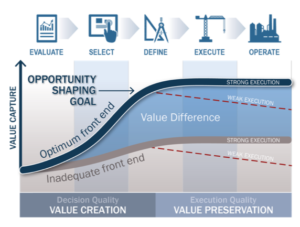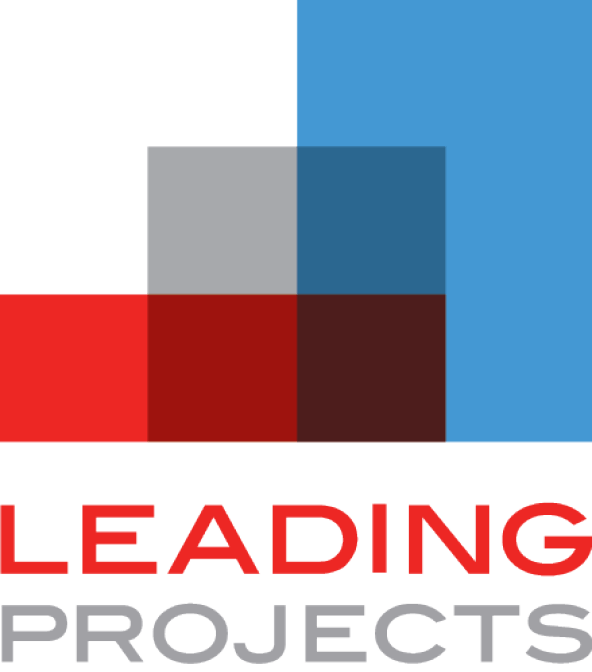For years now, stage-gate systems have become a “best practice” to ensure that capital projects achieve the appropriate state of readiness before they advance from one stage to the next.

But are they working? Not if they are distracting your team from framing the right project.
Fixating on the Stage Gates Can Erode Opportunity Framing
The front-end of projects is where all the value is created. Quite often, a fixation on satisfying stage-gate (front-end loading, or FEL) requirements can prevent a team from focusing on the big shaping decisions that will create the most value. In the illustration below, there are two hypothetical projects—and one of them leaves a lot of value on the table.
2 Hypothetical Projects
 A few takeaways about this illustration:
A few takeaways about this illustration:
- No matter how good you are at execution, you can never make up the value lost due to poor opportunity shaping.
- Ironically—both of these hypothetical projects may well satisfy the company’s stage-gate requirements. Both might have good “front-end loading (FEL)”—but the one on the bottom, with inadequate shaping, is simply the wrong project (too big, too small, wrong concept, wrong technology, etc.).
- Many of the biggest decisions—the shaping choices which create the most value—don’t fall at stage gates. The contracting strategy, the development concept, the size, the location, etc. are a few examples.
- Finally, most issues in the execute or “Value Preservation” stages can be mapped back to poor decisions in the “Value Creation” stages.
Four Common Pitfalls to Avoid:
- Not considering a wide enough suite of alternatives — during the Select phase, the team should consider a wide range of options.
- Not using a robust evaluation model — the evaluation approach should completely address the agreed business drivers and selection criteria.
- Not including the right stakeholders in the process — when stakeholders are left out, the ultimate selection can easily be reversed on appeal, creating recycle for the project team.
- Fixating on a single preferred option too early — this may seem faster, but only creates the illusion of speed. The entire Select stage should be used to consider the full universe of possible alternatives; narrowing down too early frequently results in better options being overlooked—including alternatives that may be faster to execute.
So how do you ensure better opportunity shaping? By making better decisions. At Leading Projects, we conduct workshops and offer coaching for better opportunity shaping and to give teams a structured approach to ensuring decision quality on the big choices that will maximize opportunity value. Look for our paper on Making High-Quality Project Decisions in early 2020.
For more information:
Contact us at [email protected]
Greg Sills
President
Leading Projects, LLC

